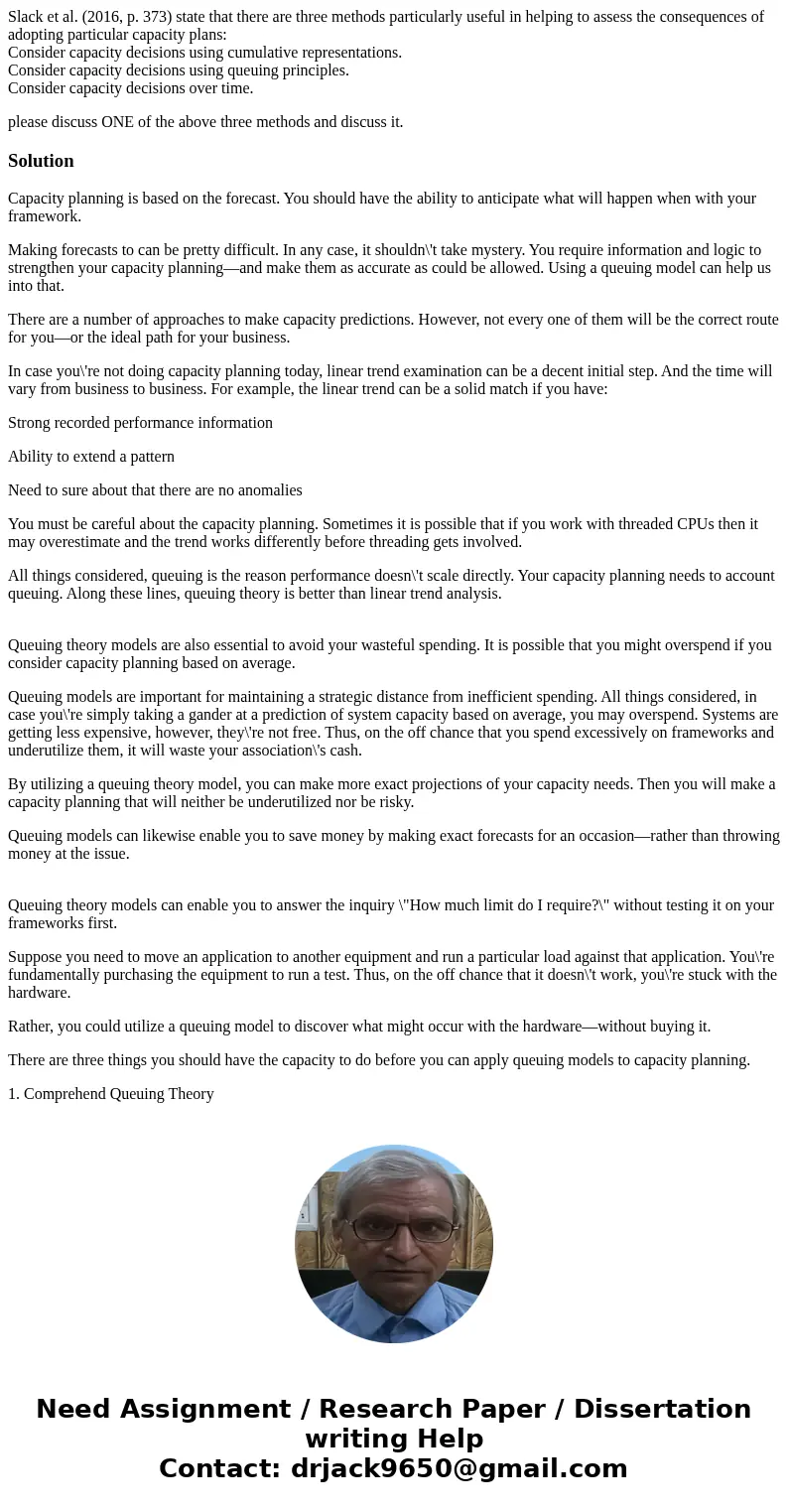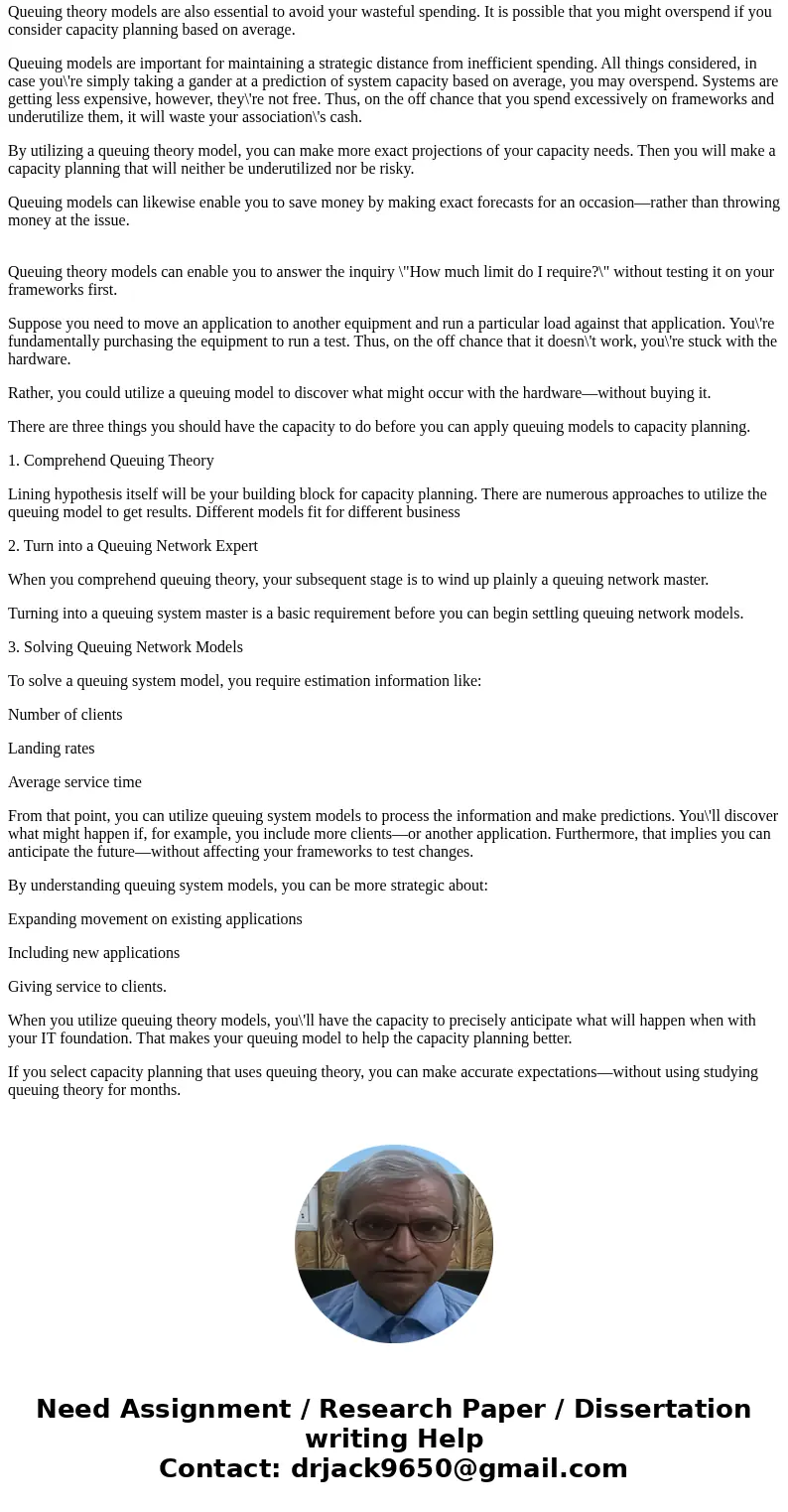Slack et al 2016 p 373 state that there are three methods pa
Slack et al. (2016, p. 373) state that there are three methods particularly useful in helping to assess the consequences of adopting particular capacity plans:
Consider capacity decisions using cumulative representations.
Consider capacity decisions using queuing principles.
Consider capacity decisions over time.
please discuss ONE of the above three methods and discuss it.
Solution
Capacity planning is based on the forecast. You should have the ability to anticipate what will happen when with your framework.
Making forecasts to can be pretty difficult. In any case, it shouldn\'t take mystery. You require information and logic to strengthen your capacity planning—and make them as accurate as could be allowed. Using a queuing model can help us into that.
There are a number of approaches to make capacity predictions. However, not every one of them will be the correct route for you—or the ideal path for your business.
In case you\'re not doing capacity planning today, linear trend examination can be a decent initial step. And the time will vary from business to business. For example, the linear trend can be a solid match if you have:
Strong recorded performance information
Ability to extend a pattern
Need to sure about that there are no anomalies
You must be careful about the capacity planning. Sometimes it is possible that if you work with threaded CPUs then it may overestimate and the trend works differently before threading gets involved.
All things considered, queuing is the reason performance doesn\'t scale directly. Your capacity planning needs to account queuing. Along these lines, queuing theory is better than linear trend analysis.
Queuing theory models are also essential to avoid your wasteful spending. It is possible that you might overspend if you consider capacity planning based on average.
Queuing models are important for maintaining a strategic distance from inefficient spending. All things considered, in case you\'re simply taking a gander at a prediction of system capacity based on average, you may overspend. Systems are getting less expensive, however, they\'re not free. Thus, on the off chance that you spend excessively on frameworks and underutilize them, it will waste your association\'s cash.
By utilizing a queuing theory model, you can make more exact projections of your capacity needs. Then you will make a capacity planning that will neither be underutilized nor be risky.
Queuing models can likewise enable you to save money by making exact forecasts for an occasion—rather than throwing money at the issue.
Queuing theory models can enable you to answer the inquiry \"How much limit do I require?\" without testing it on your frameworks first.
Suppose you need to move an application to another equipment and run a particular load against that application. You\'re fundamentally purchasing the equipment to run a test. Thus, on the off chance that it doesn\'t work, you\'re stuck with the hardware.
Rather, you could utilize a queuing model to discover what might occur with the hardware—without buying it.
There are three things you should have the capacity to do before you can apply queuing models to capacity planning.
1. Comprehend Queuing Theory
Lining hypothesis itself will be your building block for capacity planning. There are numerous approaches to utilize the queuing model to get results. Different models fit for different business
2. Turn into a Queuing Network Expert
When you comprehend queuing theory, your subsequent stage is to wind up plainly a queuing network master.
Turning into a queuing system master is a basic requirement before you can begin settling queuing network models.
3. Solving Queuing Network Models
To solve a queuing system model, you require estimation information like:
Number of clients
Landing rates
Average service time
From that point, you can utilize queuing system models to process the information and make predictions. You\'ll discover what might happen if, for example, you include more clients—or another application. Furthermore, that implies you can anticipate the future—without affecting your frameworks to test changes.
By understanding queuing system models, you can be more strategic about:
Expanding movement on existing applications
Including new applications
Giving service to clients.
When you utilize queuing theory models, you\'ll have the capacity to precisely anticipate what will happen when with your IT foundation. That makes your queuing model to help the capacity planning better.
If you select capacity planning that uses queuing theory, you can make accurate expectations—without using studying queuing theory for months.


 Homework Sourse
Homework Sourse